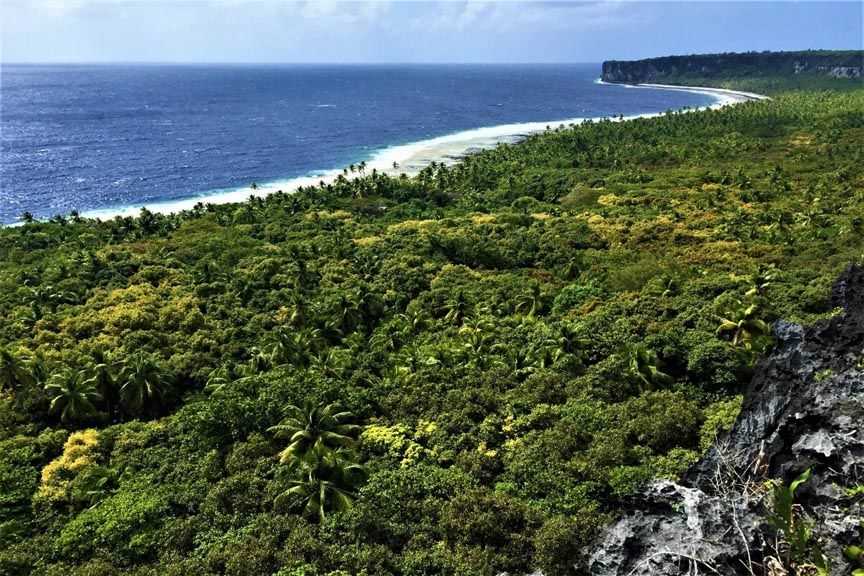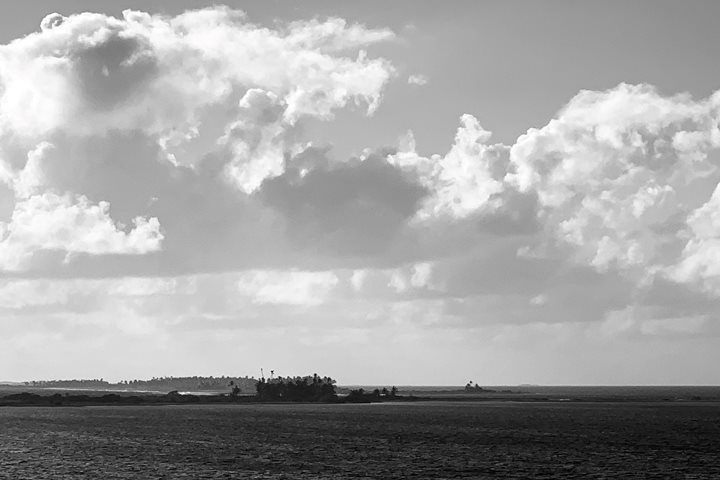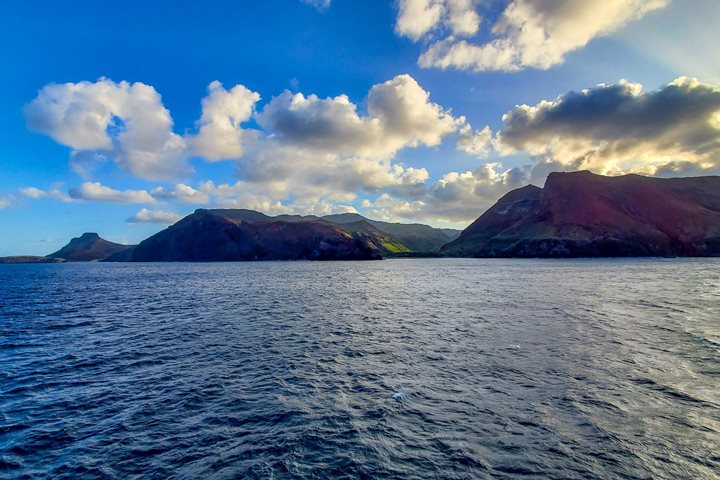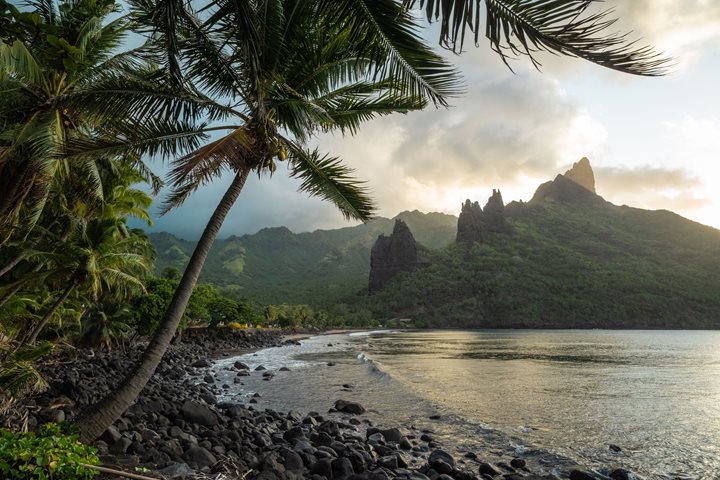Rising 260 feet above sea level, Makatea is an uplifted coral reef dating back 50 million years. Surrounded by spectacular limestone cliffs, Makatea is considered part of the Tuamotu Archipelago. It is isolated, untamed and beautiful, offering an exclusive adventure when compared to other frequently visited locations in French Polynesia. As National Geographic Orion approached this magnificent island, anticipation was tangible on board. The forecast predicted challenging conditions that could potentially disrupt disembarkation. Luckily, the weather improved, and we were able to set ashore to explore the island, its history, and geological formations.
Hiking, birding, and tours were offered, and we learned about the island’s interesting past. For decades, Makatea was a very active island due to phosphate mining. In fact, Makatea was one of the most populated islands within the Tuamotus Archipelago. After the end of the phosphate exploitation, Makatea was abandoned and only a few families remained to watch over the island. We visited a little sleepy village and “The Belvedere”, which is a vantage point that allowed us to gain a broad perspective of Makatea’s incredible geology. The highlight of the day was the unique opportunity to explore the underworld and swim in a freshwater cave, called “The Grotto.” Makatea’s native name means pure or clear water. We had the privilege to immerse ourselves into these sacred waters, and snorkel in the cave and observe submerged geological formations like stalactites, travertines, and columns. This is a unique environment.
Back on board National Geographic Orion, it was time to set sail and continue our exploration heading deeper into the beautiful Tuamotu Archipelago.







